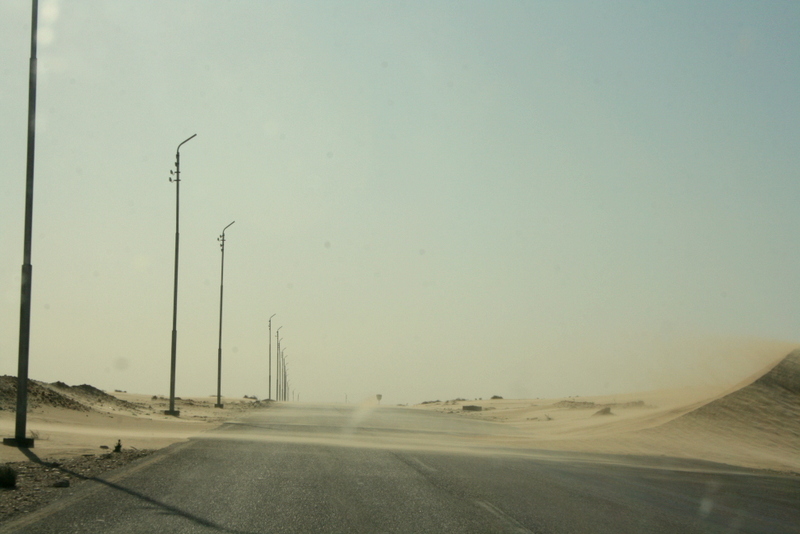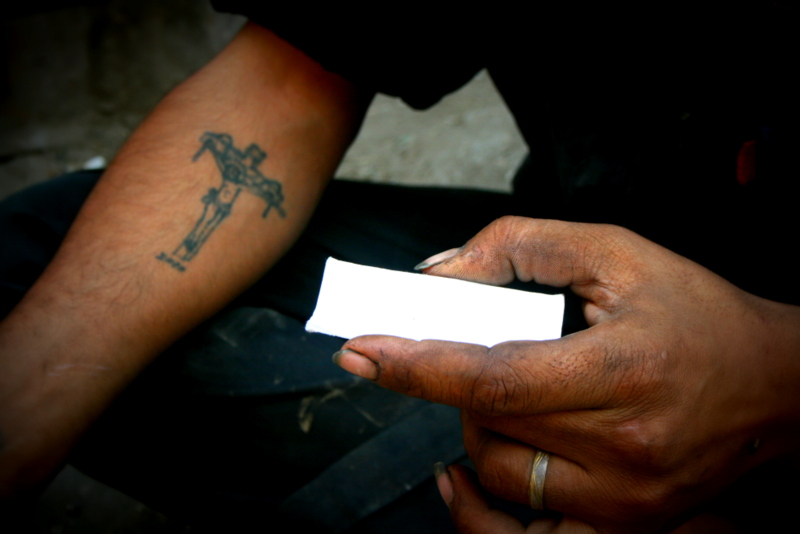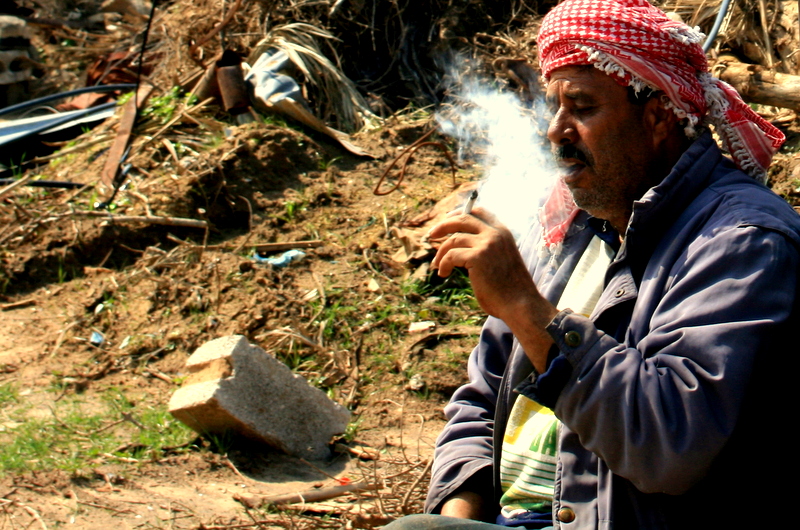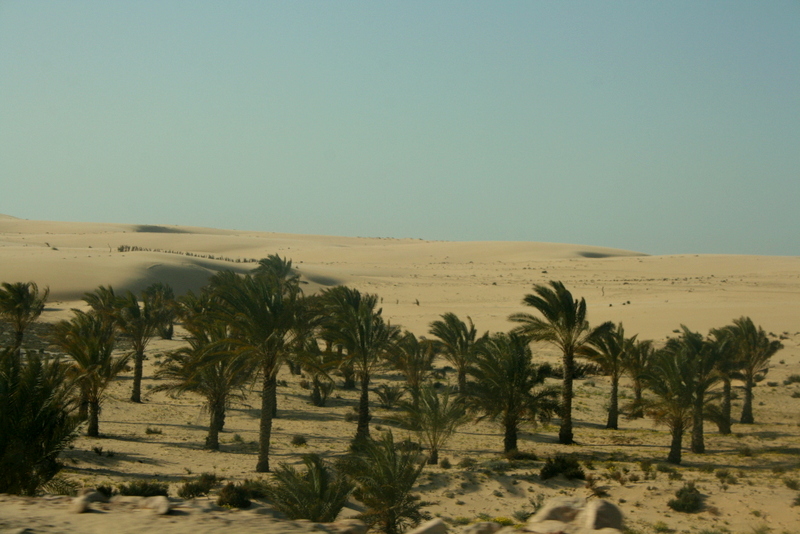A Hungarian Journalist Investigating Egyptian Weed and Hashish
A sand storm. We're sitting in a car, racing towards Cairo, on the Ismaïlia desert road. Visibility is about two meters, and the whole car is surrounded by sand; it creeps through small gaps and drums on our leather jackets. “Can we smoke, ya hag?” Mano, my assistant, asks the old Bedouin driver, holding out two joints. The old man nods, takes one, and starts to smoke as if it was the most natural thing in the world, then passes it over and steps on the gas. By the time we reach the first military checkpoint, the car is reeking of the stuff, and we are high on it, but nobody cares.

Although Egypt has strict narcotics laws, such as the death penalty for possession of large quantities of drugs, they are not generally enforced. Unlike in some Asian countries, where many foreigners await execution on death row, here users are rarely apprehended, and then, generally for political reasons. Egypt is most famous, apart from its tourist sights, for being the greatest drug distributor in the Middle-East.
While alcohol consumption is part of the culture in Europe, it is almost non-existent in the Middle-East. The reason is a religious one: The prophet Mohammed (peace be upon Him) forbade the consumption of fermented grain, but he did not mention tobacco or cannabis, so the Middle-East has inclined towards THC derivatives and opiates.
Islam has three categories of consumables: Haram (sinful) including pork and alcohol; Makruh (disliked) including tobacco, cannabis and opium; and Halal (permissible) covering everything else. Although the spread of Salafiyyah ideologies has started heated arguments among Muslim theologians about what the prophet would say about smoking dope, the majority do not consider it a serious offence – as distinct from members of some extremist movements who would prohibit even tobacco and every mind-altering or harmful substance. An Arabic youth would probably smoke dope long before trying alcohol, which they would possibly never use in their whole life. In Egypt, as in the whole Middle-East, the most popular recreational drug is cannabis. Everyone smokes bango (which means weed in Egypt).

I first saw bango in 2009, when I was in Gaza, reporting to Magyar Narancs about Operation Cast Iron. We were taking pictures of houses destroyed by shells, and dead donkeys lying on the road in Khan Yunes, a few kilometres from Rafah in Palestine, when an old Palestinian farmer, who came to pick up drinking water, started puffing a sizeable cigarette in between filling two water pots, and, being a generous soul, immediately passed it around among the khauega (foreign) youths. I guess he was hoping that we would work more enthusiastically. When I asked him where he had got the stuff, he said only that, “It grows in my garden, and it’s cheaper than cigarettes”.
His reply perfectly illustrates the cannabis situation in the Sinai Peninsula. Whole cannabis fields grow in the demilitarised zone next to the border between Israel and Egypt, and the local Bedouin tribes (Tarabin, Suwarka, Armilat) happily distribute it in the big cities – Alexandria, Ismailia, Cairo and Port Said – or Israel itself. Last November, I had the opportunity to spend some time among the Bedouin living near the border, so I know quite well the exact price of bango in and around El Arish. My Bedouin driver told me that a bag of bango – around a kilogram – is about 200 to 250 Egyptian pounds, and one joint is 5 pounds. Weed doesn't cost much more in the big cities.

But before you make plans to export high quality Egyptian weed to the Hungarian market, you should bear in mind that no dealer would buy it. The THC content of ganja coming from the Sinai Peninsula doesn't even come close to that of the weed you can buy in Europe, because weed grown in the Middle-East – as opposed to the stuff you can buy in Hungary – has rarely been cross-bred to increase its effect. While you can get high on 0.2 to 0.4 grams at home – depending on your tolerance level – you would have to smoke much more Egyptian weed to get the same effect, if any, and not just a bad headache. Bango, though, is the substance of choice only for the lower classes. The more well-off use hashish.
The Moroccan connection
In Egypt, hashish isn't often made from weed. It arrives from Morocco, through Libya and Sudan, and goes on to other Middle-Eastern countries and Europe. It comes to the big cities in great greasy lumps, bearing the seal of its Moroccan producer.

Although Egypt uses the metric system, dealers don't use grams to measure hashish. “One finger,” they say, which is a piece of hashish the size of an index finger, cut from a block. I never made the effort to measure this quantity precisely, but I would guess it must be around 4 or 5 grams. The price is between 50 and 100 Egyptian pounds; the darker the colour, the better the quality.
While bango is mostly smoked by the Bedouin of the Sinai Peninsula and the poor of the cities, who cannot afford the relatively expensive hashish, the latter is the most popular recreational narcotic among the middle classes, who use it the same way Europeans drink alcohol. (Don’t get me wrong, you can buy alcohol in Egypt, but it is used only by a minuscule part of society, as opposed to cannabis. And then, not in public, because alcohol consumption is stigmatised by society.
During the years I spent in the Middle-East, I saw several modes of hashish consumption, in different company. The most interesting case, however, happened at a wedding in Alexandria in 2007. In Sidi Gaber, where I was living, the locals separated part of a street with colourful canvas. There was nothing surprising in it, street weddings are quite usual in Egypt. What I was fascinated by, was the recreational drug consumption of the wedding party, the way they used hashish.
Traditionally, hashish is not smoked in cigarettes, mixed with tobacco (though this is becoming more common, especially among young people) but drunk. But how? you ask. The method is very simple: They cut a thin piece, the size of a matchstick, from the hashish block, and set it in a cigarette. Then they put the cigarette into a glass, light the protruding hashish and cover the glass. Since hashish smoke is heavier than air, it collects in the bottom of the glass, and when the glass is full of thick white smoke, they simply raise the cover (for example a sheet of paper), and suck the smoke out of the glass. I saw old men of about 60 or 70 consume it in this way.
According to a survey by the Egyptian Ministry of Health, around 25 to 30 percent of the population use drugs regularly. This number includes alcohol and hashish consumption, but hard drug users are counted separately.
SÁNDOR JÁSZBERÉNYI, Cairo
(This article reflects only the views of the journalist, not those of the HCLU!)






